In a historical moment where we talk about body shaming, xenofemism is theorized and the image of the self is continually questioned and violated through the digital bulimia of social media, has a great value to reflect on the sense of one’s identity (increasingly fluid and oblique) and therefore on one’s own body and on the relationships between us and the world.
In this reflection where confused words and thoughts are often wasted causing damage to information, art can at least be an important stimulus for study. The “3 Body Configurations” exhibition curated by Fabiola Naldi and Maura Pozzati at Fondazione Del Monte Bologna, presented as one of the Main Projects of the 2020 edition of Art City on the occasion of Arte FierA, is emblematic for these issues.
“3 Body Configurations” winds its way through a century of history, the twentieth century, a period in which women artists fielded very impactful and important emergencies and research. Claude Cahun, VALIE EXPORT and Ottonella Mocellin tell us about it in this exhibition itinerary, meeting at a distance of generations, through the use of extra artistic devices such as the body, photography and performance. The exhibition must not be read only according to a feminist context, on the contrary, it is a universal and silent manifesto that indicates to us possible journeys to understand the ego and the other from us – photography has allowed us to document the militant actions of these extraordinary artists managed to go beyond themselves.
The exhibition offers the opportunity to see for the first time in Italy a careful selection of photographic works by Claude Cahun (thanks to the collaboration with the Jersey Heritage Collection), an equally significant selection of photographic works by VALIE EXPORT (thanks to the collaboration with the ‘Atelier VALIE EXPORT and the Museion of Bolzano) and a revival of a photographic project in the late nineties by Ottonella Mocellin (thanks to the collaboration with Lia Rumma gallery).
“3 Body Configurations” takes its cue from the title of a VALIE EXPORT project developed from 1972 to 1982 and a key concept from which one can start to experience the exhibition is certainly the assumption of the philosopher Adriana Cavarero taken from the text (which accompanies the exhibition by the philosopher Francesca Rigotti. From the exhibited works it can be understood that women do not have a vertical body, or at least they no longer want it, women are inclined (taking up the expression contained in the text “Inclinations” by Cavarero), tired of sticking to an ethical righteousness, women question themselves and put themselves on the line, experimenting with themselves.
Three questions: who am I? Where am I? How am I? The photographs of the three artists on display tacitly replied to me with numerous possibilities, with declared courage.
Claude Cahun (1894), pseudonym of Lucy Reneé Mathilde Schwob in her numerous portraits, disguises, shots was conceived in an authentic and multiple way, she was born starting from the adoption of another name to show us that the search for an identity whatever it is, it starts with a powerful, imaginative revolution that is told by the full-bodied artistic and photographic activity shared with her partner Suzanne Malherbe, also renamed in Marcel Moore. A couple who fought not only against censorship but who even suffered the arrest by Gestapo for choosing an active resistance. Claude Cahun was even awarded the Silver Medal of French gratitude for the acts of resistance in Jersey – precisely that island in the English Channel where she moved in May 1938 together with Suzanne and where in the photograph – the human figure almost tended to disappear into the vegetation – like a dissolution – almost a warning sign of what would soon sanction the Second World War. We can’t help falling in love with Claude Cahun, for being ahead of her time, for her courage, for being everything: man, woman – white, black – both shaved and made up, in her shots we find the harmony of the dichotomy.
Where am I? VALIE EXPORT (1940) has told us over time thanks to numerous performances in public spaces, developed in a feminist perspective aimed at emphasizing the widespread male chauvinism of society; also part of the “renamed”, at the registry office Waltraud Lehner decided in 1970 to create a symbolic SMART EXPORT photograph in which she replaces the brand on the well-known Austrian cigarette package (Smart Export) with her own image. It is the birth of a new Venus that is not going to be painted, but on the contrary wants to shout to the world that she has the brush on the side of the handle, her image with the “action pants” – cut jeans Mustang where she holds a machine gun in her hand staring at the viewer. In the photographic series Körperkonfigurations (Body Configurations), 1972-1982 – VALIE EXPORT portrays in different positions (certainly not vertical) in the public and architectural space intended as a symbol of male supremacy. The woman becomes aware of her identity through space – and EXPORT underlines it by relating to corners, walls, interstices – and short pictorial red or black inserts – silent but physical – applied on the silver gelatin prints.
How am I? Ottonella Mocellin (1966), who has grown up in a large family unit, brings with her the value of the multitude and sharing and an example is certainly her beautiful family, as well as her works shared with her partner and artist Nicola Pellegrini. Mocellin is a transversal artist who loves to use different mediums such as photography, video, voice, text, embroidery, drawing – all elements that make up her own intimate narration to be shared. In the photographic project exhibited, Mocellin stages her body in relation to different possible stories, almost appearing as frames of films, we are in fact paused, in the act of putting an action – in front of bodies lying, dormant, deliberately and openly horizontal (in reference to Adriana Cavarero). How these bodies are is at the discretion of the observer’s gaze, asleep, passed out, dead women – Mocellin generously offers us the opportunity to enter the scene with our imagination – immersing ourselves in those daily lives that we feel belong to each look, always a little more.
It is in the denial of an imposed verticality that therefore the woman’s body can and must move towards its own affirmation – because it is never easily inclined to conquest, it is the inclination investigated so far that is a daily conquest.
Info:
3 Body Configurations. Claude Cahun – Valie Export – Ottonella Mocellin
18 January – 18 April 2020
curated by Fabiola Naldi e Maura Pozzati
Fondazione del Monte di Bologna e Ravenna
Via delle Donzelle, 2 Bologna
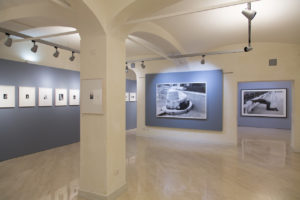 3 Body Configurations, installation view at Fondazione del Monte di Bologna e Ravenna ph. Alessandro Ruggeri
3 Body Configurations, installation view at Fondazione del Monte di Bologna e Ravenna ph. Alessandro Ruggeri
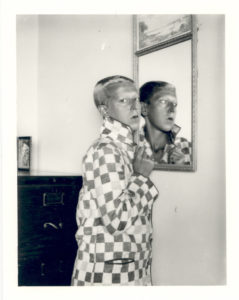 Claude Cahun, Self-portrait (image reflected in the mirror, checkered jacket), 1928 Courtesy Jersey Heritage Collection
Claude Cahun, Self-portrait (image reflected in the mirror, checkered jacket), 1928 Courtesy Jersey Heritage Collection
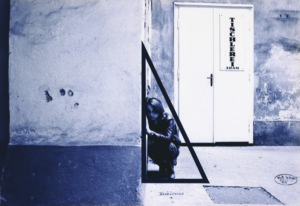 VALIE EXPORT, Bedrückung, (Körperkonfiguration), 1972 Courtesy Museion, Bolzano
VALIE EXPORT, Bedrückung, (Körperkonfiguration), 1972 Courtesy Museion, Bolzano
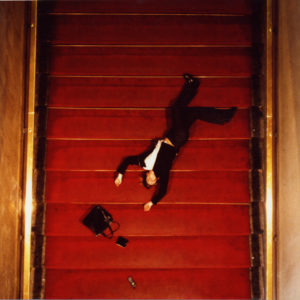 Ottonella Mocellin, Falling, 1998 courtesy Lia Rumma, Milano
Ottonella Mocellin, Falling, 1998 courtesy Lia Rumma, Milano
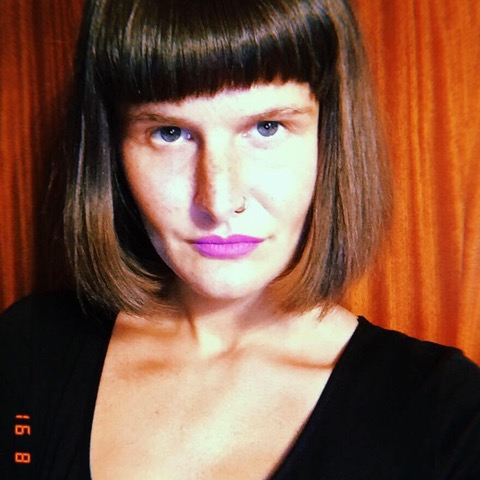
(1990) Graduated at DAMS in Bologna in Visual Arts with a thesis on the relationship and the paradoxes that exist between photography and fashion, from Cecil Beaton to Cindy Sherman, she specializes at the Academy of Fine Arts in Bologna in the two-year course in art teaching, communication and cultural mediation of the artistic heritage with a thesis on the historical-critical path of Francesca Alinovi, a postmodern critique. Since 2012 she has started to collaborate with exhibition spaces carrying out various activities: from setting up exhibitions to writing critical texts or press releases, to educational workshops for children, and social media manager. She has been collaborating since 2011 with various magazines: Vogue online, The Artship, Broken Fracture, Wall Street International Magazine, Forme Uniche Magazine.






NO COMMENT